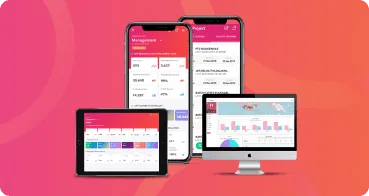Agile, have you ever heard of this one type of software development method? If not, let’s see a full review of the Agile definition and its 6 main benefits below!
Born from the concept of “Agile Manifesto”
Before discussing the definition of Agile, how about discuss why Agile method can exist?
Agile Software Development, or Agile, initially emerged from an idea or concept called “Agile Manifesto”. Agile Manifesto is the values of software development that initiated by a group of software developers. The Agile Manifesto emerged from their frustration with the traditional method (Waterfall Model). This is because the Waterfall Model has a long process and gap between requirements and product delivery so that the risk of project cancellation is so high. In 2001, these values were created and called Agile Manifesto. It is also from the values of this Agile Manifesto that Agile Software Development method is developed.
Conceived by Jon Kern, Kent Beck, Ward Cunningham, Arie van Bennekum, Alistair Cockburn, and 12 others, the Agile Manifesto has 4 underlying values: Individuals and interactions over processes and tools, Working software over comprehensive documentation, Customer collaboration over contract negotiation, and Responding to change over following a plan.
Definition of Agile
Agile is one type of method in software development. Agile is also popularly known as SDLC (Software Development Life Cycle). Currently, Agile method is widely used by technology companies, such as startups, in developing their software.
Agile literally means “able to move quickly and easily”. This is a special feature or what distinguishes it from the Waterfall method. In accordance with the value of the Agile Manifesto, this one software development method emphasizes a system that is easy to accept change and adapt quickly. The important point, Agile can provide a large space for your team to be able to make decisions quickly, with good quality and predictions, and increase the potential to handle any changes well.
Types of Agile That Companies Can Use
Agile does not only have one type, there are at least 8 types of Agile methods that your company can use. Here are the Agile types for software development:
- Adaptive Software Development (ASD)
- Agile Modelling (AM)
- Crystal
- Dynamic System Development Method (DSDM)
- Extreme Programming (XP)
- Feature Driven Development (FDD)
- Rational Unified Process
- Scrum Methodology
“Which Agile types are most popularly used today?”
The answer is the types of Adaptive Software Development (ASD), Dynamic System Development Method (DSDM), Extreme Programming (XP), and Scrum. Of course, it’s comes back to the software development needs of your company.
6 Benefits of Agile for Your Project
1. Project work can be broken down into teamwork units
With the Agile method, you can split or divide a job in a project into several smaller work units. Later, this work unit will be managed by a compatible team and worked on simultaneously.
In this way, organizing can also be streamlined. As a result, coordination can be carried out by the internal team and between teams better. In addition, this method can also speed up the completion of each project according to the deadlines that have been made.
2. Responsive to client needs
Agile provides a great opportunity for clients to be involved in the project process from start to finish that is running. Because of that, the convenience of clients in accessing data as stakeholders is certainly something that should be considered by developers.
In this condition, the developer must be flexible in capturing client input and desires for the features they want to use. Of course, this is can be easier because flexibility that the Agile method offers. Where the application of the Agile method provides greater flexibility for developers in adding or changing features according to client requirements. So, positive client experiences can be obtained to the level of responsiveness of your company which is good in receiving feedback.
3. More intense client and developer interactions
As previously mentioned, Agile provides a great opportunity for clients to be involved in all project work processes. This in turn results in active collaboration and communication between the client and the developer. Agile methods also allow the developer more time to understand client needs. In the end, a project that matches the client’s initial desire or expectation for success will be much greater.
4. Your project can be completed faster
As previously mentioned, the Agile method is able to maximize the acceleration of the completion of your project work. How?
In the type of Scrum, there is something called a Sprint. The sprint, which is the “heart” of Scrum, is a timebox for a project development that is ready to be submitted to the client. Sprint duration is usually not more than 30 days. Due to its short duration, the project development flow runs in a structured process across multiple Sprint sessions. This means that project development using this method can run iteratively and incrementally as well as be faster and more productive.
5. Teamwork speed is more stable
If in the Waterfall method the teamwork speed will decrease with the completion of the project, then it is less likely to happen in the Agile method. The incremental and iterative principles in Agile will affect the speed of teamwork to be more stable and measurable.
6. Higher Quality Results
By breaking down a project into manageable work units, teams can focus more on high-quality development, nm testing, and collaboration. In addition, the quality of project results can also be continuously improved along with feedback from clients. As a result, this method can give developers the opportunity to give the best possible results.








